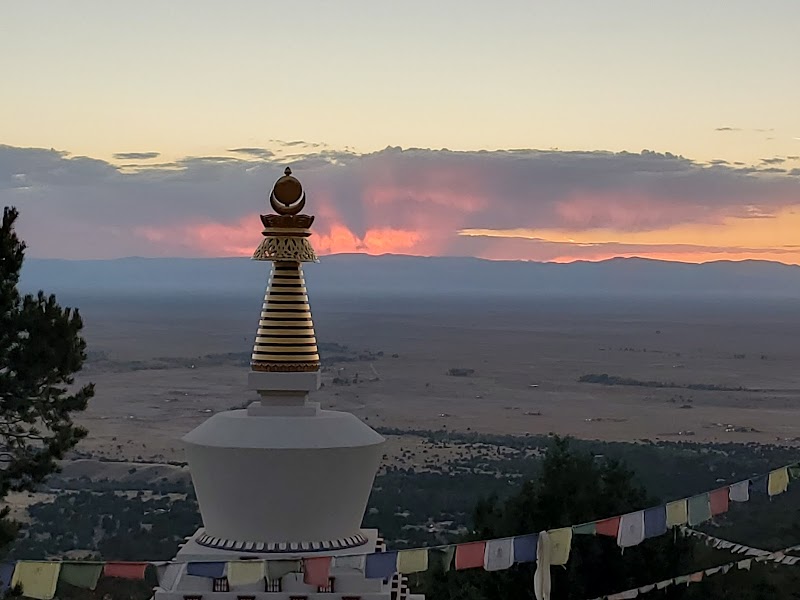
Backpacking the Sangre de Cristo Wilderness: Trails Under the Starlit Colorado Sky
Backpack through Colorado’s Sangre de Cristo Wilderness for an adventure marked by rugged trails and unforgettable starlit nights. From dense forests to high alpine lakes, this wilderness demands practical preparation while delivering raw, natural beauty and serene solitude.
Hydrate and Filter
Water is abundant but always filter from streams and lakes to stay safe. Bring a reliable purification system and refill often to keep pace with elevation challenges.
Wear Sturdy Footwear
Trails are a mix of rocky paths and soft, mossy ground, so hikers need boots with good ankle support and solid tread for traction and stability.
Start Early and Camp Wisely
Arriving at camp well before dusk allows time to set up and soak in the evening sky without rushing. Choose campsites near water but safe from potential flooding.
Layer to Adapt to Weather
Mountain conditions can shift rapidly — pack layers that wick moisture and insulate. A waterproof shell is essential for sudden storms or evening chill.
Backpacking the Sangre de Cristo Wilderness: Trails Under the Starlit Colorado Sky
The Sangre de Cristo Wilderness in southern Colorado challenges hikers with raw, fiercely beautiful terrain that demands respect. Stretching across 220,000 acres, the wilderness is a rugged place of high peaks, dense forests, and winding rivers that dare you forward. Starting near Saguache, backpackers embark on routes covering between 15 to 25 miles with elevation gains up to 3,000 feet, cutting through forested valleys where the pines whisper and the wind stirs the aspen leaves.
Daylight reveals sweeping views of craggy ridges and expansive meadows dotted with wildflowers, but it’s under the stars that the wilderness truly awakens. The night sky here is a vast, dark canvas unspoiled by city glow, where Milky Way bands pulse like a river of light overhead. Pitch your tent beside a rushing creek or atop a hill and let the natural world play out its rhythms around you — the snap of branches, the distant call of an owl, the cool rush of nighttime air.
Paths range from rocky inclines to soft, mossy stretches, so sturdy footwear is a must. Water sources are plentiful along the way, but always carry a reliable filtration system. Hydration isn’t just a tip here; it’s survival. Timing matters too — arriving early to set up camp is key if you want to catch the golden hour before dusk fades to deep night, and morning light as it spills over the peaks.
While trails offer solitude, conditions can shift suddenly as mountain weather flexes its muscle. Carry layered clothing to adjust to afternoon heat and chilly nights. Learn to read the sky, watch the clouds—this wilderness is fiercely itself, not a place to rush or overpower, but to meet with preparation and respect.
Planning your route involves selecting from corridors like the South Colony Lakes loop or the challenging traverse to San Luis Peak, the highest in the range at 14,014 feet. Each trail section invites you to balance endurance with awe, mapping distance and elevation against stamina and pace.
Experience the Sangre de Cristos as more than a destination. It’s an ongoing conversation with nature’s most elemental expressions under open skies and towering stone. Backpacking here is more than a physical journey—it’s a step into a wilderness that holds you accountable, inspires quiet attention, and rewards the preparedness of practical adventurers.
Nearby Trips
All Adventures
Boat Charters
Water Activities
Adventures near Saguache, Colorado
Discover the unique and memorable adventures that make Saguache, Colorado special.
Frequently Asked Questions
Do I need a permit to backpack in the Sangre de Cristo Wilderness?
Yes, a permit is required for overnight stays in the Sangre de Cristo Wilderness to control visitor impact and preserve the ecosystem. They can be obtained from the Rio Grande National Forest office.
What wildlife might I encounter on the trails?
Expect to see mule deer, elk, and occasionally black bears. Early mornings and evenings are prime times for spotting wildlife, so keep a respectful distance and store food securely.
What is the best way to prepare for the high elevation?
Acclimate by spending time at moderate elevations before your trip, stay hydrated, and pace yourself carefully on uphill sections to avoid altitude sickness.
Are there any water sources year-round along the hiking routes?
Most routes have year-round water sources such as creeks and alpine lakes, but flow varies by season. Always carry a filter and check recent trail reports for water availability.
How can I protect the environment while backpacking here?
Practice Leave No Trace principles: pack out all trash, camp on durable surfaces, minimize campfire impact, and respect wildlife by observing from a distance.
What should I do if weather suddenly worsens?
Seek natural shelter such as dense trees or rock formations, avoid exposed ridges, and have an emergency plan including communication devices. Always check forecasts before heading out.
Recommended Gear
Backpacking Boots
Durable boots with ankle support and waterproofing for mixed terrain and wet conditions.
Water Filter/Purifier
Essential for safely drinking from streams, lakes, and rivers throughout the wilderness.
Insulating Layers
Lightweight but warm layers to adjust to cooling evening temperatures and variable weather.
Headlamp with Extra Batteries
A reliable light source is critical for campsite setup or emergencies after dark in remote areas.
Local Insights
Hidden Gems
- "Hidden Meadows Loop – an off-trail area with fewer visitors and vibrant wildflower patches."
- "Crest Viewpoint – a little-known spot offering panoramic sunset views east over the San Luis Valley."
Wildlife
- "Watch for the elusive pine marten scampering through the subalpine forests and listen for the distinctive eagle calls at dawn."
History
"The Sangre de Cristo Mountains have been home to Ute and Hispanic settlers for centuries, with routes used for seasonal hunting and trade that still influence trail locations today."
